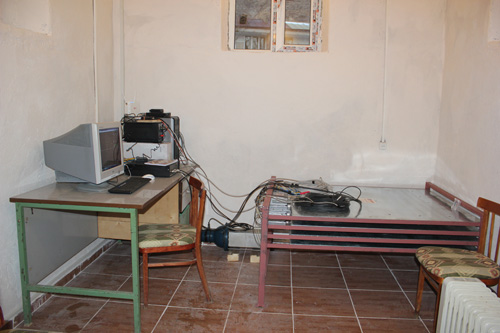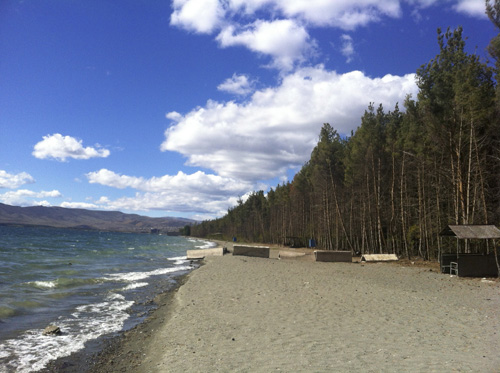
| 2013-12-01 10:43:58 |
|
National lab physicists launch High Energy Atmospheric Research station on the shore of Sevan lake
Last week Arakelyan Karen, Reymers Artur, Hanikyanc Gena, Daryan Ara and Rushanyan Geim visited YePhI summer hotel on Sevan lake to launch long awaiting High Energy Atmospheric Research (HEAR) station. Special thanks to staff of the Sevan summer hotel staff leading by Hamayak Dganikyan for repairing of HEAR building!

Figure 1. HEAR monitors: STAND1 and NaI particle detectors are measuring 1-minute time series (in the right); electronics and control equipment send data on-line each minute to Yerevan CRD headquarters (on the table).
HEAR is equipped with modern elementary particle detection system measuring cosmic ray electrons, muons and gamma rays. The electric mill is monitoring the electric field above the lake and lightning detector - the occurrences and distance to lightning flashes. All together the research complex is ideally suited for research of high-energy phenomena in atmosphere, including Thunderstorm ground enhancements (TGEs) discovered at Aragats, relativistic runaway electron avalanches and enigmatic particle bursts correlated with lightning.

Figure 2.Time series of charged particle fluxes measured by the layered STAND1 detector; when large enhancement of count rate occurred data from 3 scintillators will be used for recovering integral energy spectrum of TGE events.
The unique location of station near large high-mountain lake is extremely favorable for discovering new high-energy phenomena in terrestrial atmosphere, ionosphere and magnetosphere.

Figure 3. HEAR building with electric mill and antenna of lightning detector on the roof; from left to right: KhanikyancGena, Dganikyan Hamayak, DaryanAra, Arakelyan Karen and Rushanyan Geim
HEAR along with 3 other YerPhI research stations will provide early warnings on upcoming severe storms, when thunderclouds appear ~1000 km from Armenian borders. Station will operate 24 hours/12 months and will send the data and forewarnings to Yerevan CRD headquarters and to mirror sites in Europe and USA.

Figure 4. Shore of Sevanlake near YerPhI summer hotel; note clouds in the air - potential source of particle fluxes!
